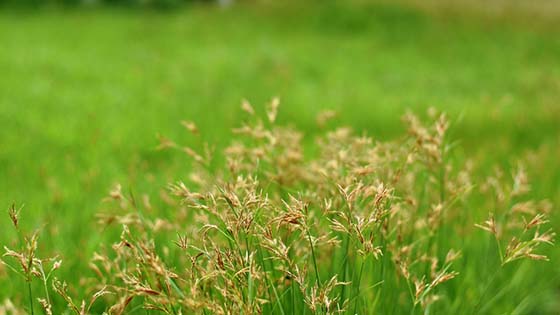Nutsedge and crabgrass are the irritating weeds that are mostly found in your backyards and lawns. These nasty weeds will grow exponentially if not terminated initially. Therefore, for the prevention of such weeds, various tips and tricks need to be adopted.
We’ve packed some detailed information consisting of nutsedge identification, it’s eradication, and its comparison with crabgrass weed. Therefore, proceed reading further for more clarity.
What is a nutsedge?
Nutsedge is a permanent weed with a shelf life of at least two years. This nasty weed is scientifically named “Cyperus esculentus” and is found majorly in the areas of the Indian Subcontinent, Africa, the Middle-East, and the Eastern Hemisphere. This irritating weed is the replica of green grass but it is giant. The stem of nutsedge weed consists of three vertices which make it resemble a triangle. The weed also contains yellowish and purplish flowers with leaves at its end. The nutsedge weeds with yellowish flowers grow in mid-summer, and the weeds with purplish flowers grow at the end of summer.
Nutsedge has a complex root system known as “Rhizomes”. These rhizomes are the base for various sedges. The rhizomes are immersed in the soil with a depth of 8 to 14 inches and spread rapidly to form fresh nutsedges. Therefore, it’s crucial to identify the base of nutsedge rhizomes to get rid of the weeds immediately.
How to get rid of Nutsedge Naturally
Natural procedures serve to be the best fit to eradicate nutsedge weeds. Some common natural tips for the termination of nutsedge are listed below.
TIP 1
You can use your hands to eliminate nutsedges from your yard. While going to hunt nutsedges, cover your hands with gloves, and use bin bags for the purpose. Now, first, identify the nutgrass and green grass. Nutgrass is usually giant as compared to green grass with massive leaves and flowers. Once you’re successful in identifying the nutgrass then look for the base of nutsedge rhizomes. After being successful in finding nutsedge rhizomes, immediately pluck them out and throw them away in the bin bags. In this way, you can rapidly stop the growth of these irritating weeds.
TIP 2
You can spread the sugar in your yard to eradicate these nasty weeds. Sugar serves to be the organic killer for these irritating weeds. First, you need to sprinkle water in your yard with the help of a sprayer so that it may get some moisture. After then smoothly spread sugar with the assistance of a yard spreader then again sprinkle some droplets of water. You’ll see your lawn free from such nasty weeds within a week. Repeat the process after every month for more effective outcomes.
How to get rid of nutsedge in flower beds
Nutsedges play a trouble-causing role, especially in the flowerbeds. If you find such sedges then instantly look for some adequate weed killers. Usually, for the yellow nutsedges, pennant magnum herbicide is recommended and for the purple nutsedges, image herbicide is effective. You can also implement natural tips on the sedges if they’re in the small quantity.
How to get rid of nutsedge in garden
You can get rid of nutsedge in the garden by implementing either natural tips or by using some super active herbicides. While following natural tips, make sure to use gloves and bin bags. If you’re using the herbicide product then do follow the proper instructions mentioned on the label.
Nutsedge weed killer
Some adequate nut grass killers that provide rapid control of these permanent weeds are listed below.
- Pennant Magnum Herbicide (for the yellow nutsedges)
- Image Herbicide (for the purple nutsedges)
- Ortho Max nutsedge killer
- Sledgehammer nutsedge herbicide
Nutsedge VS Crabgrass
Well, both the weeds are trouble-causing in nature if not controlled initially. Let’s have a summarized model about the nutsedge weed and crabgrass weed.
- Nutsedge, scientifically named “Cyperus esculentus” is a permanent weed that is found usually in the areas of the Indian Subcontinent, Africa, the Middle-East, and the Eastern Hemisphere. Unlike nutsedge weed, crabgrass scientifically named “Digitaria sanguinalis” is a yearly weed and is found commonly throughout the United States.
- Nutsedge weed is the replica of green grass but it is giant and consists of massive leaves along with yellowish and purplish flowers that are attached to a triangular stem. The sedge with yellow flowers usually grows in the mid of summer and that with the purplish flowers grows at the end of summer. Unlike nutsedge weed, crabgrass is identical to the crab of the sea having multiple hollow stems with purplish flowers and blue and green leaves.
- Some adequate herbicides for nutsedge prevention are ortho nutsedge killer, sedgehammer nutsedge herbicide, image nutsedge concentrate, and ortho max nutsedge killer. The effective killers for crabgrass are drive xlr8 herbicide, tenacity herbicide, acclaim extra herbicide, and quinclorac 75 DF.



